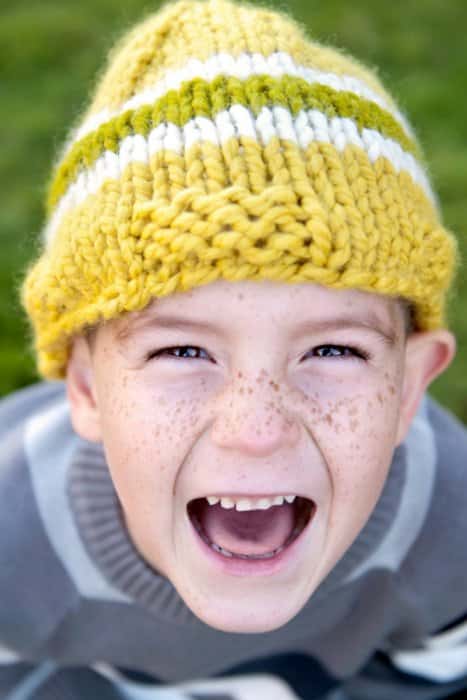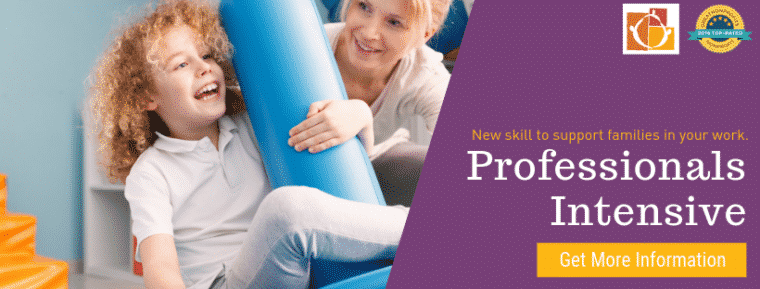
How does a therapist use play to reach kids and help them recover from trauma?
They ask them to lead it.
At least, that's what happens when a therapist—or anyone working towards a trauma-informed environment around kids—is using the Hand in Hand approach.
We call the play tool “Playlistening.” To do it, the therapist allocates some time towards child-led play, asking the child what games or activities they would most like to play. The therapist, playworker or educator co-operates with them, looking for one thing most of all: laughter.
 How does this really look?
How does this really look?
Imagine a child you are working with tells you, “I think you should color everything red,” during a coloring session. When you are Playlistening, maybe you play around with not coloring it red, you pretend the purple pen is red, or make out you can't see a red pen, having them “help” you do it.
How would you respond to this direction? “I am going to lock you in jail and have you eat bugs.” The child leads you to the “jail” and mimes spoon-feeding make-believe bugs.
Now, you'll still submit to eating the bugs, but not so happily. You'll get plenty playful with it instead. You'll act mock-disgusted with them, spitting them out or choking on them. You might pretend those wiggly bug legs choke you. You may act like some bugs escape and make you itchy, or stings your tongue making you talk funny.
The child leads the play. Yes. How you respond depends on how they respond. When Playlistening, you the one thing you need to guide you is laughter,
Here's why.
Play is important for all children. But it can be especially useful with children recovering from trauma. This type of Playlistening, where a child takes a powerful lead. gives them space to play out and explore issues they have experienced, with your safe and warm attention.
Laughter, when used to aid emotion release, helps to loosen fears and tenseness a child might be holding onto or stuffing away following trauma.
As you probably know if you've spent much time working with kids, they'll often work through their issues using play, so putting them in charge is a compass on what needs attention, and, ultimately, under your guidance using Playlistening, can be a beautiful and transformative way to heal. It builds safety, connection, confidence and strength.
And when you are aware of the child's fear-related associations Playlistening can be used to set up power-giving roleplay that re-builds competence.
Meet Five Tools That Operationalizes the Trauma-Informed ARC Framework
Playlistening is one of five Hand in Hand tools that can be used to provide trauma-informed caregiving in trauma-sensitive environments. The tools focus on establishing connected, attached emotional relationships, and can be used to support a child's well-being and development post-trauma by therapists, teachers, careworkers and anyone working with kids.
The tools are easily applied and can be used within the Boston Trauma Center's ARC Framework, in these ways.
Arc Model: Attachment
This strand looks at where the caregiver rates in the child's limbic system and how they attune, relate and respond to the trauma event, as well as the child's behaviors and emotional response.
Which Hand in Hand Tool? Special Time
Special Time is a one-on-one child-led playtime that is a powerful, efficient and effective way to build a child's sense of connection with their caregiver and makes sure that the child gets regular, solid attention and attunement. Special Time quickly and deeply strengthens a child's feelings of connection to caregivers and gives them a greater sense of safety and control.
Read about how Special Time helped this child face surgery and amazed her doctors
Arc Model: Regulation
Examines how caregivers and the child co-regulate within the context of the relationship.
Which Hand in Hand Tool? Staylistening, Listening Partnerships
Staylistening helps caregivers to anchor a child during emotional outbursts and moments when the emotions of early experiences have been triggered and dysregulation occurs. The tool provides a containing regulatory environment where a child can offload and reset his or her limbic alarms.
Listening Partnerships are the parallel process for adults charged with providing this anchoring, which can be emotionally draining and triggering for them. Parents will take turns listening and attuning to another adult who offloads and retune their system for a set amount of agreed time.
Arc Model: Competence
Helps children to develop confidence, a solid, self-concept and competence.
Hand in Hand Tool: Playlistening
Offers a simple, accessible and fun way to re-build the confidence and competence that is impacted when children have traumatic experiences and their coping systems become overwhelmed. Role-reversal roleplays and physical play and roughhousing are recommended. In a wrestling game, the adult would put up a struggle that the child can fight against but ultimately win, in a chase game, an adult may comically stumble and fall or never catch the child, although the child will catch them.
Children, Trauma and How Hand in Hand Helps. Join us as we delve into the many ways trauma shows up in children, how the tools of Hand in Hand Parenting can support families affected by trauma in our next webinar.
Hand in Hand’s Professional’s Intensive course is designed for psychologists, therapists, social workers, teachers, early childhood professionals, and anyone working with children. Find out how it could benefit your work here.
Save
